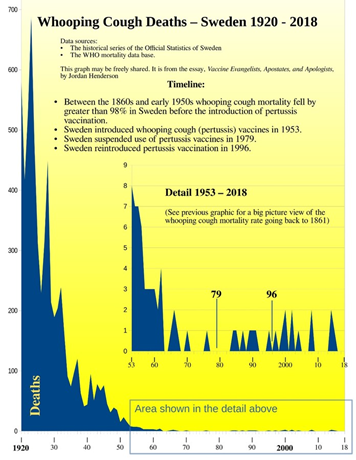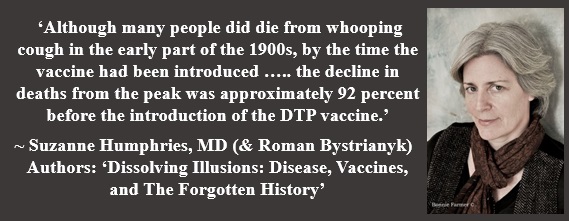
Roman Bystrianyk
http://www.healthsentinel.com

Vaccines and
Disease: An investigative Report by Roman Bystrianyk
Vaccine history by Roman Bystrianyk
Apple cider vinegar by Suzanne Humphries, MD and Roman Bystrianyk
Book
[2013] Dissolving Illusions: Disease,
Vaccines, and The Forgotten History
Quotes
"Did you know that by the late 1800s and into the early 1900s, as vaccination rates plummeted, smallpox became a very mild disease often confused with chickenpox? That's probably not the story you were told... During 1896 a very mild type of smallpox began to prevail in the South and later gradually spread over the country. The mortality was very low and it [smallpox] was usually at first mistaken for chicken pox or some new disease called “Cuban itch,” “elephant itch,” “Spanish measles,” “Japanese measles,” “bumps,” “impetigo,” “Porto Rico scratches,” “Manila scab,” “Porto Rico itch,” “army itch,” “African itch,” “cedar itch,” “Manila itch,” “Bean itch,” “Dhobie itch,” “Filipino itch,” “nigger itch,” “Kangaroo itch,” “Hungarian itch,” “Italian itch,” “bold hives,” “eruptive grip,” “beanpox,” “waterpox,” or “swinepox.”.― Charles V. Chapin, 1913 Charles V. Chapin, “Variation in Type of Infectious Disease as Shown by the History of Smallpox in the United States,” The Journal of Infectious Diseases, vol. 13, no. 2, September 1913, p. 173."

"Did you know In Sweden, examinations in 1978 showed that 84% of children who
were verified to have pertussis had previously received three doses of vaccine.
As a result, the whole-cell DTP vaccine was deemed ineffective. Combined with
the concerns over its safety, the Swedish health ministry recommended
discontinuation of the whooping cough vaccination in 1979. From 1979 to 1996 (17
years), there was no national vaccination program. However, notice that there
isn’t any increase in deaths, which were close to zero before they began
vaccinating in 1953."
'In the early 1900s, other treatments were being successfully used to treat measles. In 1919 Dr. Drummond commented that cinnamon oil was an effective prophylactic against measles or that it made measles milder. It has been my practice, when I meet with a case of measles in a family, to prescribe a course of cinnamon for all unprotected members of the family. In the majority of cases the person so treated [with cinnamon] escaped the disease [measles] altogether, or else had it in very mild form'. ---- “Cinnamon as a Preventive of Measles,” American Druggist Pharmaceutical Record, New York, November 1919, p. 47. [2013] Vaccines: a peek beneath the hood By Roman Bystrianyk and Suzanne Humphries, MD
Vaccines did not save humanity and never will. Vaccines have never been proven truly safe except for perhaps the parameters of immediate death or some specific adverse events within up to 4 weeks. Smallpox was not eradicated by vaccines as many doctors readily say it was. They say this out of conditioning rather than out of understanding the history or science. Polio virus was not responsible for the paralysis in the first part of the 20th century. Polio vaccine research, development, testing and distribution has committed atrocities upon primates and humanity. Bill Gates is not a humanitarian. Vaccines are dangerous and should never be injected into anyone for any reason. They are not the answer to infectious diseases. There are many more sustainable and benevolent solutions than vaccines.[2011 Feb] A Few Things I Know by Suzanne Humphries, MD
Paul Offit talks in his recent book Deadly Choices—Deadly Choices:
Deadly Choices: How
the Anti-Vaccine Movement Threatens Us All
about how the whooping cough vaccine has reduced deaths from that disease from
7,000 to only 30. Whooping cough (pertussis) is a devastating
infection. Before a vaccine was first used in the United States in the 1940s,
about three hundred thousand cases of whooping cough caused seven thousand
deaths every year, almost all in young children. Now, because of the pertussis
vaccine, fewer than thirty children die every year from the disease. But times
are changing.
The problem with these statements is that they are not
supported by the evidence. When we look at the actual data, we see that although
many people did die from whooping cough in the early part of the 1900s, by the
time the vaccine had been introduced the death rate in the United States had
declined by more than 90 percent. Using the source that was referenced to make
the statement in the Pediatrics paper, we see that the decline in deaths from
the peak was approximately 92 percent before the introduction of the DTP
vaccine. [2013]
Vaccines: a peek beneath the hood By Roman Bystrianyk and Suzanne Humphries, MD

[2013]
Vaccines: a peek beneath the hood By Roman Bystrianyk and Suzanne Humphries, MD